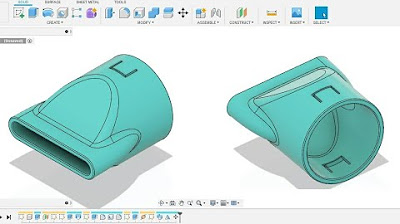Dialux evo - How to do Street Lighting Design Calculation1
Summary
TLDRIn this tutorial, Nela provides a detailed guide on calculating road lighting requirements based on a subscriber's request for clarity. She demonstrates how to set up parameters in Dialux software, focusing on a 1000-meter road with 10-meter pole spacing. Key discussions include determining the appropriate pole height and wattage for luminaires to achieve required Lux levels, contrasting contractor and consultant perspectives on cost and efficiency. Nela explores both metal halide and LED lighting options, providing practical insights for optimizing street lighting design while maintaining performance standards.
Takeaways
- 😀 A subscriber requested a straightforward approach to street lighting calculations using Dialux Evo.
- 😀 The project involves a 1,000 m long straight road with 10 m spacing for light poles.
- 😀 The width of the road is confirmed to be 10 m, accommodating two lanes and additional emergency lanes.
- 😀 The speaker emphasizes the importance of defining the height and wattage of the light poles to achieve desired lux levels.
- 😀 A metal halide luminaire was initially selected, and the height was set to 8 m to meet lighting requirements.
- 😀 The importance of balancing cost and performance is discussed when dealing with contractors and consultants.
- 😀 The video later explores using LED luminaires, demonstrating the flexibility in wattage and pole height to meet lux requirements.
- 😀 By adjusting parameters like pole height and wattage, the required lux levels can still be achieved even with lower specifications.
- 😀 The speaker illustrates that achieving the desired lux levels involves trade-offs between pole height, spacing, and luminaire wattage.
- 😀 Overall, the tutorial highlights effective lighting design strategies and the significance of selecting appropriate fixtures for road lighting.
Q & A
What is the main topic of Nela's tutorial?
-The tutorial focuses on road lighting calculations using Dialux software, addressing specific requests from a subscriber.
What was the subscriber's main concern regarding the existing YouTube tutorials?
-The subscriber found the existing tutorials too long and difficult to understand, seeking a more straightforward approach for their project.
What are the key parameters Nela discusses for road lighting design?
-Key parameters include pole height, wattage of the luminaire, spacing of the poles, and the required lux levels for proper illumination.
How did Nela determine the road width in the project?
-Nela adjusted the road width to 10 meters to accommodate two lanes (3.5 meters each) along with emergency lanes and sidewalks.
What luminaire types did Nela explore during the tutorial?
-Nela initially selected metal halide luminaires and later explored LED options for the road lighting design.
What was the initial pole height and wattage used in the first calculation?
-The initial calculation used a pole height of 8 meters and a wattage of 140 W for the metal halide luminaire.
What adjustments did Nela make to optimize the lighting design?
-Nela experimented with lowering the pole height to 6 meters and tested different wattages, including a 54 W LED and a 90 W metal halide luminaire.
How did Nela ensure the lux levels were achieved?
-Nela ran calculations within Dialux, adjusting parameters like pole height and wattage until the desired lux levels were met, ensuring compliance with design requirements.
What advice did Nela give regarding contractor and consultant perspectives on lighting design?
-Nela noted that contractors often prefer lower pole heights and wattages for cost efficiency, while consultants focus on achieving optimal performance and design, regardless of cost.
What conclusion can be drawn from Nela's tutorial?
-The tutorial demonstrates the importance of balancing technical specifications in road lighting design, enabling effective use of Dialux to meet project requirements while considering budget and performance.
Outlines

This section is available to paid users only. Please upgrade to access this part.
Upgrade NowMindmap

This section is available to paid users only. Please upgrade to access this part.
Upgrade NowKeywords

This section is available to paid users only. Please upgrade to access this part.
Upgrade NowHighlights

This section is available to paid users only. Please upgrade to access this part.
Upgrade NowTranscripts

This section is available to paid users only. Please upgrade to access this part.
Upgrade NowBrowse More Related Video

Tutorial Alinyemen Vertikal / Profile View di Civil 3D | Perancangan Jalan #5

Fusion 360 beginner's Exercise #7 - Fusion 360 tutorial

Unit 2.5 Planning IP Addressing

Dinding Geser - 1: Teori dan Contoh Desain Dinding Geser

Desain Pelat 2 Arah Beton Bertulang - Part 2 - Pehitungan dengan Metode Koefisien Momen

InfiRAY P2 Pro vs T2S+ Thermal Camera Comparison, Which is the best buy in 2023?
5.0 / 5 (0 votes)